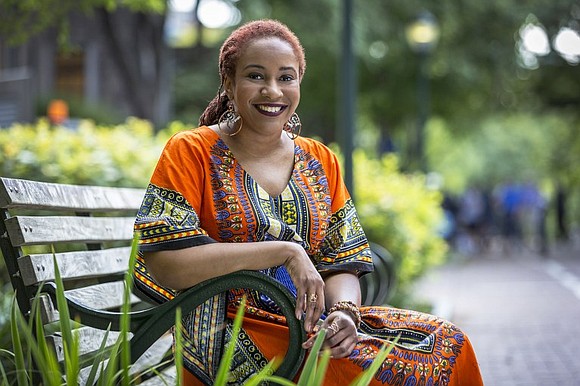University of Pennsylvania Professor Ebony Elizabeth Thomas Offers List of Children’s Books That Accurately Depict Slavery
Style Magazine Newswire | 7/30/2018, 11:07 a.m.
Source: Good Black News
by Greg Johnson via penntoday.upenn.edu
Children in the U.S. are often introduced to America’s troubled and cruel history through movies, television programs, and children’s books. Historical fiction is frequently the means by which children learn about atrocities such as the enslavement of African Americans, racial segregation, Japanese-American internment, and the genocide of Native Americans.
Discourse about these topics in children’s literature can be difficult in light of the books’ overall function to inspire, transmit values, and spark young minds. But an omission or inaccurate portrayal of the crimes and suffering can do lasting societal damage to readers and how they see the world.
Ebony Elizabeth Thomas, an associate professor in the Graduate School of Education, has for the past decade been exploring representations of slavery in children’s literature. Over the last six years, she and her research team have compiled a database of 160 children’s books covering slavery that were published between 1970 and 2015—almost half of all the children’s books on slavery published in the 35-year period, many of which are no longer in print.
An expert on children’s literature and the teaching of African-American literature, history, and culture in K-12 classrooms, Thomas says parents, teachers, and educators must consider questions of readership, ethnicity, class, gender, story, background, intended audience, and difficulty when selecting books for their students.
Thomas supports the criteria put forth by scholar Rudine Sims Bishop that children’s literature about slavery should, in part, celebrate the strengths of the black family as a cultural institution and vehicle for survival, and bear witness to African Americans’ determined struggle for freedom, equality, and dignity.
Ashley Bryan’s “Freedom Over Me: Eleven Slaves, Their Lives and Dreams Brought to Life” is a book Thomas points to as one that successfully gives an accurate depiction of slavery, humanizing African Americans held in bondage while also conveying the truth and difficulty of slave life.
“I recommend this book. What you’re getting here is 11 slaves’ lives and dreams that are being brought to life by this author,” she says. “[Bryan] is representing their complexity in the illustrations, his writing of the poetry. I highly recommend this because it balances humanizing enslaved African Americans, but he’s also showing the complexity of their lives.”
On top of her 160-book database on slavery in children’s literature, Thomas is conducting reader response surveys in Philadelphia public schools, and has published two articles on representations of slavery in children’s books.
Thomas also praises “Underground: Finding the Light to Freedom” by Shane W. Evans; “All Different Now: Juneteenth, the First Day of Freedom” by Angela Johnson; “Freedom Song: The Story of Henry “Box” Brown” by Sally M. Walker; “Almost to Freedom” by Vaunda Micheaux Nelson; “The People Could Fly: The Picture Book” by Virginia Hamilton; and “Love Twelve Miles Long” by Glenda Armand.
Additionally, she is working on a book about slavery in children’s literature tentatively titled “Reading Racial History,” and she serves on the advisory board of Teaching Tolerance’s Teaching Hard History project.
Thomas says children’s literature is a prime site for social reproduction, and an unexamined site of social progress, regress, and/or transformation.
“If you have children’s media that’s regressive, and the children of today are going to be the adults of the mid-to-late 21st century, if we don’t change the children’s media that they’re being fed by, just like we still remember and talk about ‘Peter Pan,’ ‘Alice in Wonderland,’ and other fictions of the long-ago Victorian and Edwardian eras, they’re going to still be influenced by these current writings—from ‘Harry Potter’ to problematic books about slavery—deep into the 22nd century.”
Read more: https://penntoday.upenn.edu/news/representing-slavery-childrens-literature





